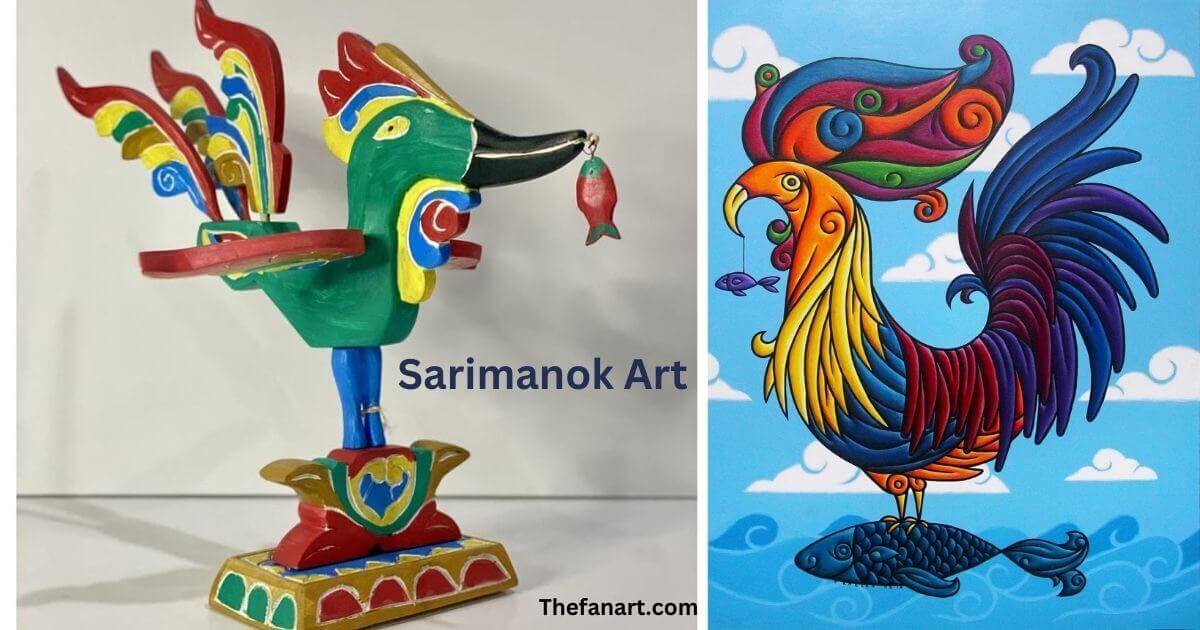Sarimanok is a cultural symbol of the Maranao People. Those people are from the island in southern Philippines. It is a legendary bird that is also known as the symbol of fortune and good luck. The word Sarimanok is a combination of two words, Sari and Manok. Sari means a garment of various assorted colors whereas Manok stands for chicken or rooster. So, what is Sarimanok Art? Sarimanok is a form of art that can see in the architecture and art of the Maranao people. It draws in different art forms, such as on paper with colors or a sculpture made with wood. It is a chicken with beautiful colorful feathers holding a fish in its beak.
Sarimanok art can see everywhere in the Philippines. It has become a sign of pride, dignity, and honor. This beautiful bird features in various traditional legends. These legends are all about love, romance, and respect.
Below we have narrated the two most popular and admired legends that will help you to understand the importance of this bird in the tradition of the Maranao people.
Sarimanok Art Meaning
The Sarmanok art links with wellbeing and prosperity in Maranao culture. It is the valuable art of Maranao people of Philippines that are Muslims. The significant color of Maranao people adds unique meanings in the Sarimanok art pieces. Yellow color is the royal blood, green color represents the heaven color and red color is the sign of bravery or courage. The bird painting comes with a fish. This fish symbolizes the food that the Maranao people offer to the spiritual world.
Sarimanok Art History
Abdulmari Imao is the first national artist who works in the Sarmianok presentation through art and sculptures. The beginning of the Sarimano is associated with folk stories. The origin of Sarimanok comes from a bird of spirit world named Itotoro.
The Sarimanok Stories
Sarimanok present in several traditional legends in the Philippines. Sarimanok stories are all about the relation of the spiritual world and the actual world.
One of the famous legends narrates about a prince named Rajah Indarapatra. According to this legend, in old times Prince Rajah Indarapatra fell in love with the moon goddess. She used to come down to earth every Friday to take a bath in a perfumed well.
The prince knew very well that they could not be together ever because the goddess was not from this world. He became completely hopeless. One day, when he was making a wooden chicken, he challenged his sculptor to take him to the moon.
The rooster with his beautiful colorful features, came into life and took the prince to the moon to be with his lover. According to legend, the prince never sees again after that day.
According to another legend that belongs to Muslims, when Prophet Muhammad went to visit seven heavens, He saw a roaster at the first heaven. That roaster is so big that its head touches the second heaven.
The roaster’s crow wakes up all the living creatures in the world except men, the legend says that. Maranaos believes that the day the roaster would stop crowing will be the day of judgement.
Sarimanok Colors
Sarimanok is a very colorful and attractive art. It is a beautiful bird with colorful wings and a tail full of feathers. Usually, sharp colors such as green, yellow, purple, and red use to draw its wings and feathers. These colors make this art attractive and charming.
Sarimanok is present in other several legends as well. No matter if these legends are real or just folk, the bird has a prominent part in the lives of the Maranao people. The influence of Sarimanok can see in the lives of the Maranao people, in their architecture, and in their literature too.
This roaster also indicates the relationship between the original and spiritual world. The art that initiates in the southern part of Philippines by the Maranao people now has become a cultural symbol of the whole country.
Whole Philippines now take this colorful chicken as a symbol of prosperity that would help them in having good crops.



